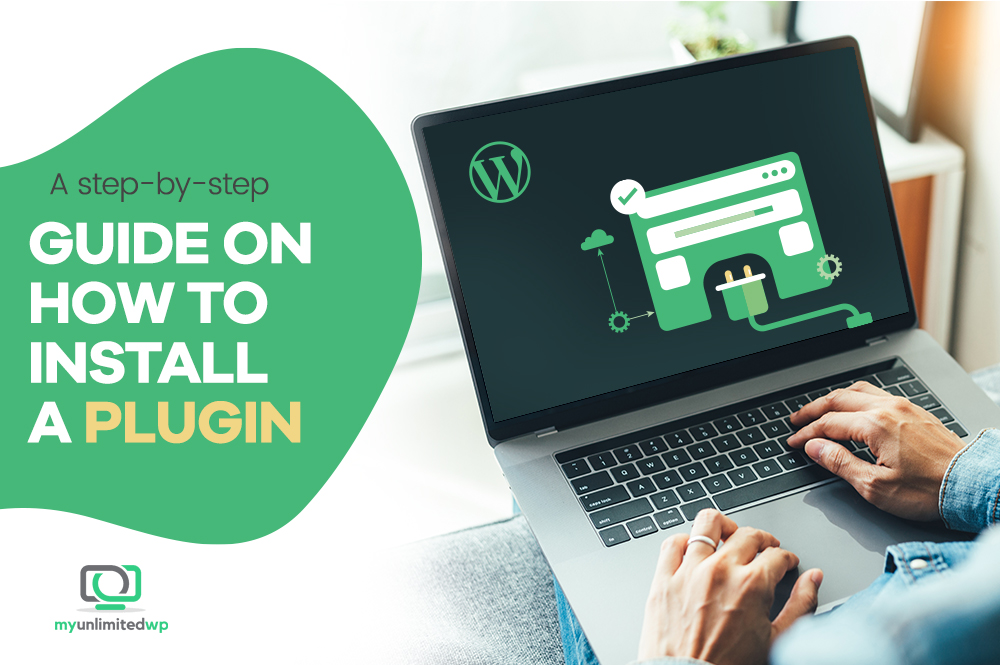Overview: Plugins enhance your website’s functionality, and WordPress is full of plugins to choose from. If you’re interested in adding some plugins, you’ll be glad to know that the process of installing a plugin doesn’t require difficult coding. So what do you actually need to do? Keep reading to find out!
When you first dive into the world of WordPress options and features, one of the first things you’ll discover is the abundance of plugins that are available to add to your website. With over 55,000 plugins available to download, it’s a sure thing that there’s one out there that will make your WordPress experience better.
With such a huge number and variety of plugins out there, it can be intimidating to even think about starting to work with them. But don’t avoid them! Enhancing your website functionality with WordPress is easy. You can install, activate, and begin using WordPress plugins in the blink of an eye.
Here’s what you need to know!
How to Add FREE Plugins to WordPress:
There are three ways to install a WordPress plugin: directly from the dashboard, manually, or via FTP (aka File Transfer Protocol). The most effortless way to add plugins is by searching for your desired plugins in the WordPress dashboard and installing them with a click.
Let’s review the top three ways to install WordPress plugins. Starting from the basics — using the plugin search tool in the WordPress dashboard. You’ll be glad to know that you won’t have to look for an external source to check for updates to your plugins – you can easily update from the dashboard too.
>>> Related Reading: How to manually or automatically update a WordPress plugin
To add a plugin to your WordPress website from the dashboard, do this:
Step #1 – Go to Plugins in Your WordPress Dashboard:
Begin the process by going to your admin panel and clicking on Plugins in the left sidebar menu. Then Click “Add New” at the top of the Plugins page.
Here’s a quick guide to The 36 best WordPress plugins to make your website delightful
Step #2 – Find Your Plugins:
You’ll be directed to a page that shows a list of featured, popular, and recommended plugins. If you’re lucky, you might find what you’re looking for right away on one of these lists. Otherwise, you can use the handy search field to track it down.
Put the name of the plugin you want, or a relevant search term summarizing what you want the plugin to do, in the search field. The WordPress search engine is pretty “smart” about bringing back accurate results.
Step #3 – Install Your Plugin:
Once you see the plugin you were looking for in results offered by WordPress, it’s time to install it. Click on the Install Now button, and when you do that, WordPress will fetch the plugin and perform the installation. The process is similar to installing a new application on your phone.
Step #4 – Activate the Plugin:
This is the final step! Click on the Activate Plugin button that has appeared next to the installed plugin.
Now you’re done — the plugin has been activated!
How to Install a Premium WordPress Plugin:
Although free plugins have a lot to offer, premium plugins offer functionality and flexibility above and beyond what you’ll get for free. But they do cost money, and they require a few more clicks than the free plugins.
>>> Related Reading: 20 best WordPress premium plugins that are worth every penny in 2023
Get the Plugin:
If you’re looking for a particular premium plugin but it doesn’t pop up right away in a search, you’ll have to take a few more steps to obtain the plugin. You can look for it on the WordPress Plugin Directory, or if it’s exceptionally specialized, you might have to download it on the developer’s website. When you’ve done that, you should end up with a zip file.
Go to Plugins in Your WordPress Dashboard:
Similar to what we did earlier, you’ll go to your WordPress dashboard, click on Plugins in the sidebar menu and then click the Add New button.
Upload Your Plugin:
At the top of the Add Plugins page, you’ll find an Upload Plugin button. Once you click on that, you can upload your downloaded zip file straight into the WordPress dashboard. Then click Install Now and let the technology take care of the rest.
Activate Plugin:
Just as you did with your free plugins, when WordPress finishes working its magic, activate the plugin. You’re good to go!
In Summary:
Installing plugins may sound daunting when you’re new to WordPress and not a professional. But by following the simple steps we’ve outlined here, you’ll be installing plugins left and right in no time at all. Every expert was once an amateur, so trust the learning process!
However, it does take time to install plugins, and to keep them updated and running smoothly requires you to regularly pay attention to the back end of your WordPress website. If this sounds like a bit of a drag, we have a wonderful alternative for you. At MyUnlimitedWP, we’re WordPress wizards with decades of experience, and when you sign up with us, we can take all the work, worry, and wondering off your back. Contact us today to learn more about what we can do for you!

